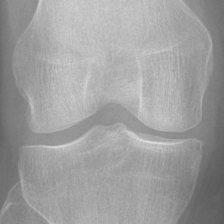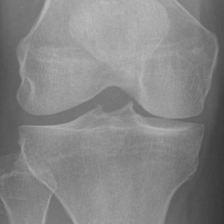Please refresh the page if the GIFs are not synchronized :)
X-ray

Real MRI
; ?>)
Generated MRI
; ?>)
With x2 Interpolation
; ?>)

; ?>)
; ?>)
; ?>)
Knee osteoarthritis (KOA) is a prevalent musculoskeletal disorder, often diagnosed using X-rays due to its cost-effectiveness. While Magnetic Resonance Imaging (MRI) provides superior soft tissue visualization and serves as a valuable supplementary diagnostic tool, its high cost and limited accessibility significantly restrict its widespread use. To explore the feasibility of bridging this imaging gap, we conducted a feasibility study leveraging a diffusion-based model that uses an X-ray image as conditional input, alongside target depth and additional patient-specific feature information, to generate corresponding MRI sequences. Our findings demonstrate that the MRI volumes generated by our approach are visually closer to real MRI scans compared with other methods. Moreover, increasing inference steps enhances the continuity and smoothness between adjacent real MRI slices. Through ablation studies, we further validate that integrating supplemental patient-specific information, beyond what X-rays alone can provide, enhances the accuracy and clinical relevance of the generated MRI, which underscores the potential of leveraging external patient-specific information to improve the performance of the MRI generation.
